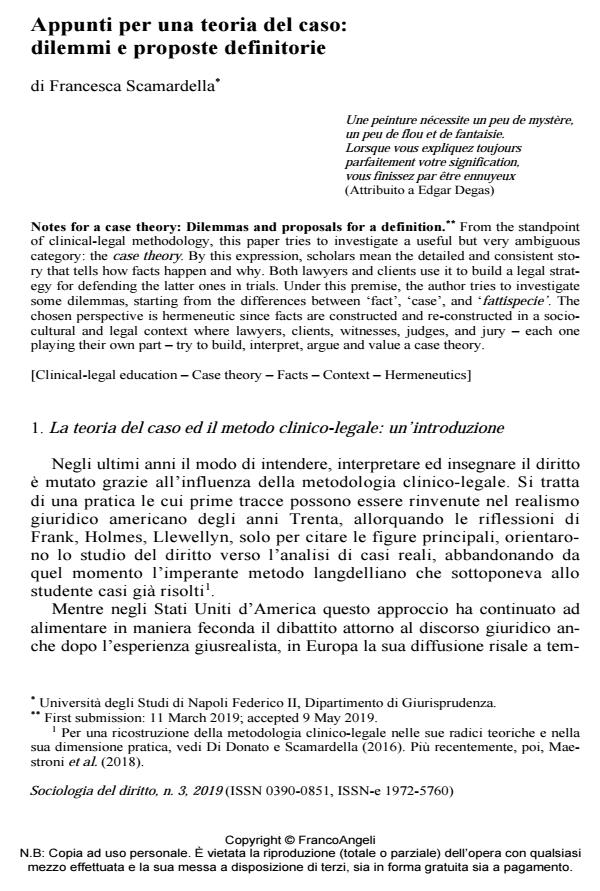Appunti per una teoria del caso: dilemmi e proposte definitorie
Titolo Rivista SOCIOLOGIA DEL DIRITTO
Autori/Curatori Francesca Scamardella
Anno di pubblicazione 2020 Fascicolo 2019/3
Lingua Italiano Numero pagine 19 P. 51-69 Dimensione file 198 KB
DOI 10.3280/SD2019-003003
Il DOI è il codice a barre della proprietà intellettuale: per saperne di più
clicca qui
Qui sotto puoi vedere in anteprima la prima pagina di questo articolo.
Se questo articolo ti interessa, lo puoi acquistare (e scaricare in formato pdf) seguendo le facili indicazioni per acquistare il download credit. Acquista Download Credits per scaricare questo Articolo in formato PDF

FrancoAngeli è membro della Publishers International Linking Association, Inc (PILA)associazione indipendente e non profit per facilitare (attraverso i servizi tecnologici implementati da CrossRef.org) l’accesso degli studiosi ai contenuti digitali nelle pubblicazioni professionali e scientifiche
From the standpoint of clinical-legal methodology, this paper tries to investigate a useful but very ambiguous category: the case theory. By this expression, scholars mean the detailed and consistent story that tells how facts happen and why. Both lawyers and clients use it to build a legal strategy for defending the latter ones in trials. Under this premise, the author tries to in-vestigate some dilemmas, starting from the differences between ‘fact’, ‘case’, and ‘fattispecie’. The chosen perspective is hermeneutic since facts are constructed and re-constructed in a so-cio-cultural and legal context where lawyers, clients, witnesses, judges, and jury - each one playing their own part - try to build, interpret, argue and value a case theory.
Parole chiave:Clinical-legal education, Case theory, Facts, Context, Hermeneutics
Francesca Scamardella, Appunti per una teoria del caso: dilemmi e proposte definitorie in "SOCIOLOGIA DEL DIRITTO " 3/2019, pp 51-69, DOI: 10.3280/SD2019-003003